Family: Diprionidae
Family common name: coniferconifer:
a usually evergreen tree characterized by reproductive cones; e.g., pine, fir, spruce, larch, etc.
sawflies
Subfamily: Diprioninae
Genus: Gilpinia Benson, 1939
Subgenera: none
The Diprionidae are known as the coniferconifer:
a usually evergreen tree characterized by reproductive cones; e.g., pine, fir, spruce, larch, etc.
sawflies, though they are not the only family to use coniferconifer:
a usually evergreen tree characterized by reproductive cones; e.g., pine, fir, spruce, larch, etc.
trees as hosts (others include Siricidae, Pamphiliidae, Xyelidae, and some genera of Tenthredinidae). Many are destructive pests as larvaelarva:
the immature stage of holometabolous insects
 , and so their biology has been more extensively studied than some other sawfly groups. Diprionids have stout bodies and distinctive antennal characteristics that make adults easy to recognize (Furniss and Carolin 1977Furniss and Carolin 1977:
, and so their biology has been more extensively studied than some other sawfly groups. Diprionids have stout bodies and distinctive antennal characteristics that make adults easy to recognize (Furniss and Carolin 1977Furniss and Carolin 1977:
Furniss RL and Carolin VM. 1977. Western forest insects. United States Deptartment of Agriculture Forest Service Miscellaneous Publication 1339: 1-655.).
Gilpinia is an Old WorldOld World:
The Eastern Hemisphere; the continents of Asia, Australia, Africa and Europe
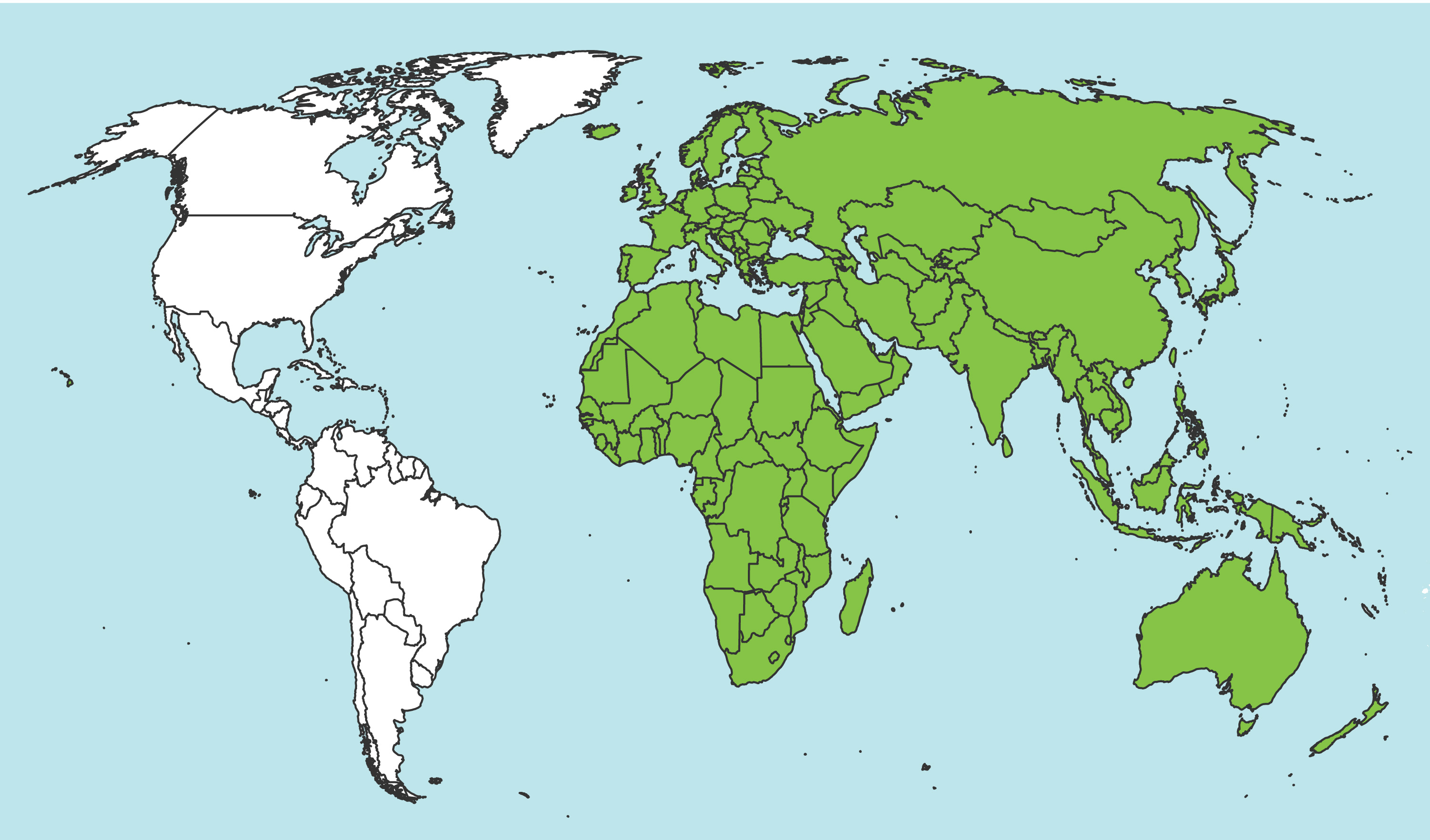 genus of which two species are introduced and established in North America. LarvaeLarva:
genus of which two species are introduced and established in North America. LarvaeLarva:
the immature stage of holometabolous insects
 feed on spruce trees. Gilpinia hercyniae is well-known in North America and in Europe as an occasional pest (Jeger et al. 2017Jeger et al. 2017:
feed on spruce trees. Gilpinia hercyniae is well-known in North America and in Europe as an occasional pest (Jeger et al. 2017Jeger et al. 2017:
Jeger M, Bragard C, Caffier D, Candresse T, Chatzivassiliou E, Dehnen-Schmutz K, Gilioli G, Jaques Miret JA, MacLeod A, Navajas Navarro M, Niere B, Parnell S, Potting R, Rafoss T, Rossi V, Urek G, Van Bruggen A, Van der Werf W, West J, Winter S, Battisti A, Kert_esz V, Aukhojee M, and Gregoire J-C. 2017. Scientific opinion on the pest categorisation of Gilpinia hercyniae . European Food Safety Authority Panel on Plant Health. EFSA Journal 15 (12): 5108. https://doi.org/10.2903/j.efsa.2017.5108).
There are 37 described species worldwide, restricted to the Northern Hemisphere. Two species are introduced in North America (Taeger et al. 2010Taeger et al. 2010:
Taeger A, Blank SM, and Liston AD. 2010. World Catalog of Symphyta (Hymenoptera). Zootaxa 2580: 1-1064.).
A preliminary key to North American species of Gilpinia is included in Reeks 1941Reeks 1941:
Reeks WA. 1941. On the taxonomic status of Gilpinia polytoma (Htg.) and G. hercyniae (Htg.) (Hymenoptera, Diprionidae). The Canadian Entomologist 73 (10): 177-188..
 strongly constricted medially, as seen from above (Goulet 1992Goulet 1992:
strongly constricted medially, as seen from above (Goulet 1992Goulet 1992: , no distinct “neck” (Goulet 1992Goulet 1992:
, no distinct “neck” (Goulet 1992Goulet 1992: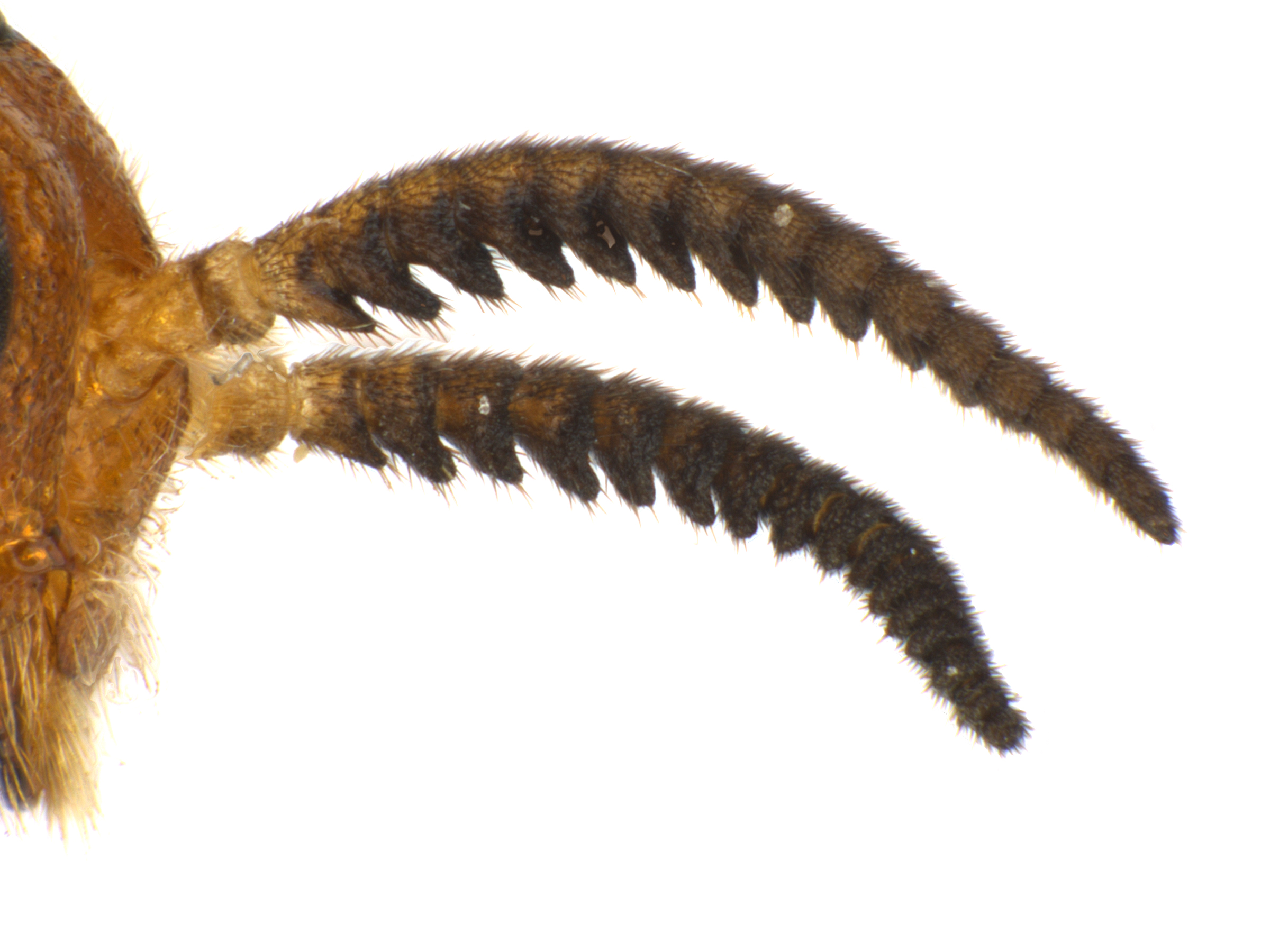 in females, bipectinatebipectinate:
in females, bipectinatebipectinate: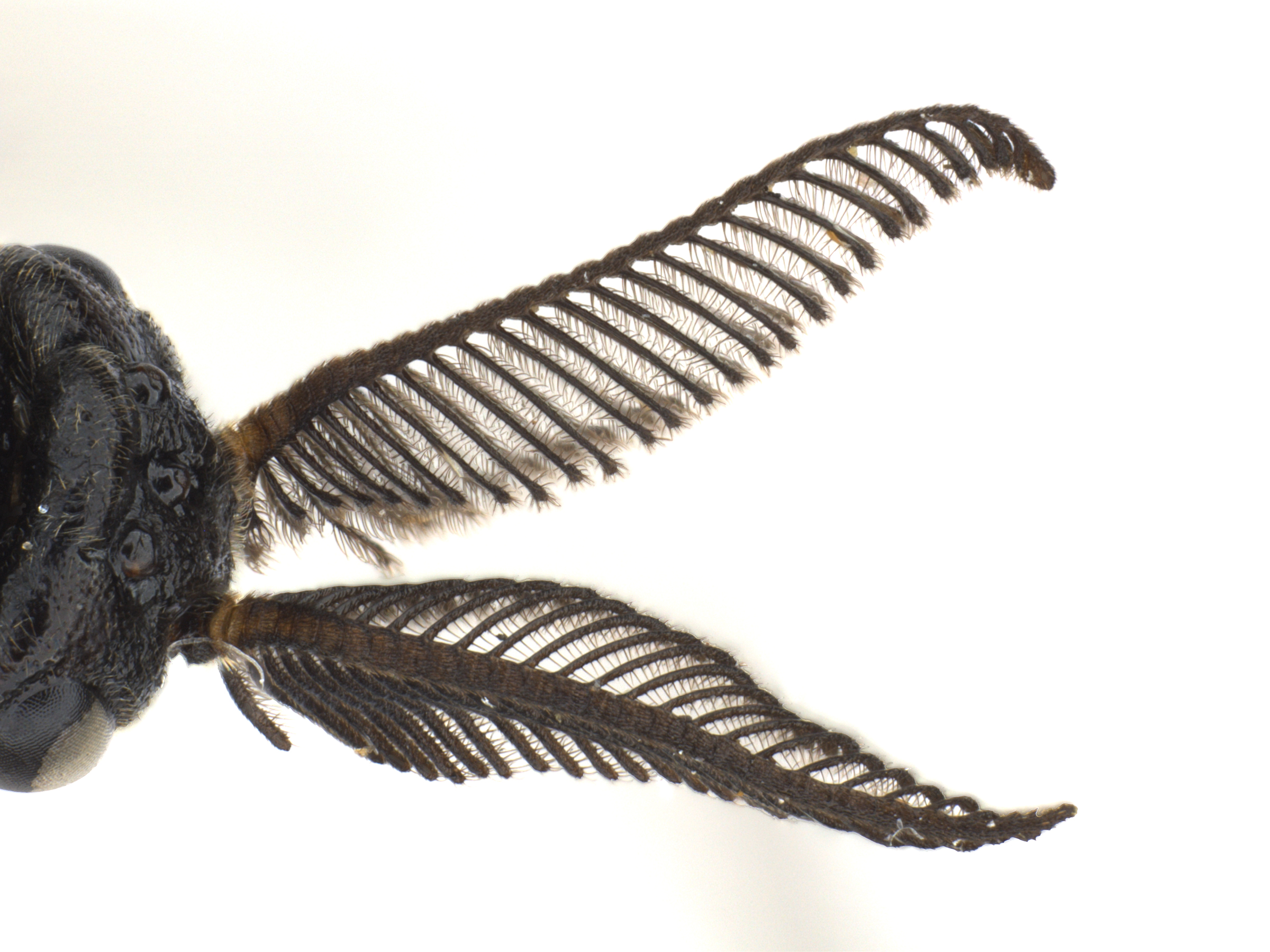 in males (Goulet 1992Goulet 1992:
in males (Goulet 1992Goulet 1992: 1A and 2A of fore wingfore wing:
1A and 2A of fore wingfore wing: connected by a crossveincrossvein:
connected by a crossveincrossvein: greater than distance between cenchricenchrus:
greater than distance between cenchricenchrus: (Goulet 1992Goulet 1992:
(Goulet 1992Goulet 1992: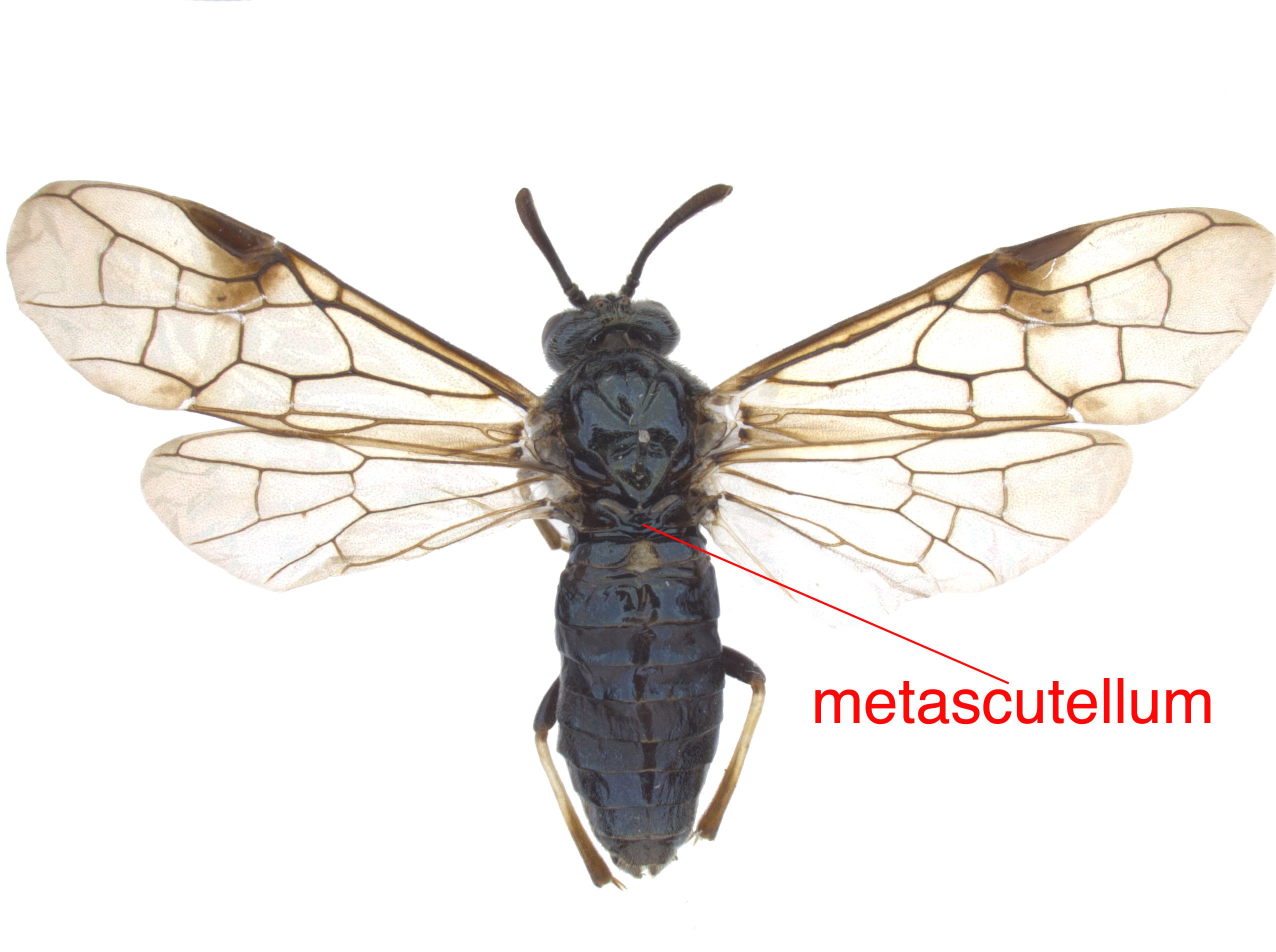 ; length of metascutellummetascutellum:
; length of metascutellummetascutellum: shorter than width of cenchruscenchrus:
shorter than width of cenchruscenchrus: (Goulet 1992Goulet 1992:
(Goulet 1992Goulet 1992: 1A of hind winghind wing:
1A of hind winghind wing: longer than width of cellcell:
longer than width of cellcell: A (Goulet 1992Goulet 1992:
A (Goulet 1992Goulet 1992:Diprionidae are most easily recognized by the distinctive antennaeantenna:
the sensory organ emerging from the front of the head, usually between the compound eyes and above the clypeus; includes the flagellum, scape and pedicel
 of both sexes, but also are characterized by small, stout bodies. Gilpinia can be separated from other genera in the family by the large cenchricenchrus:
of both sexes, but also are characterized by small, stout bodies. Gilpinia can be separated from other genera in the family by the large cenchricenchrus:
a sclerotized eliptical lobe on the metascutum used to provide friction with underside of wings to hold them in place on the dorsum of the body while in rest
 , small mesoscutellummesoscutellum:
, small mesoscutellummesoscutellum:
the anterior section of the scutellum
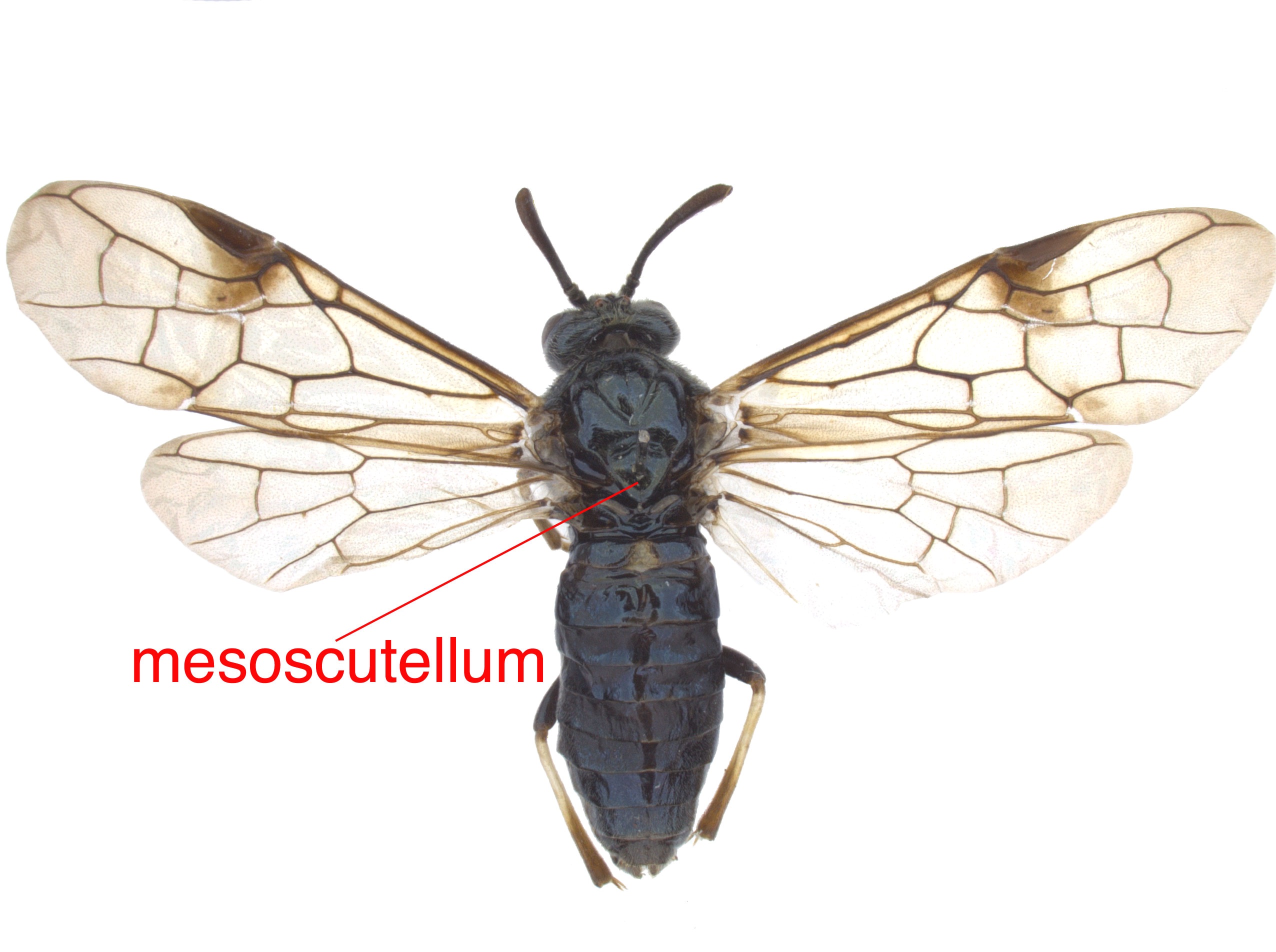 , and the anterioranterior:
, and the anterioranterior:
of or towards the front or head
margin of the mesoscutellummesoscutellum:
the anterior section of the scutellum
 (Smith 1971bSmith 1971b:
(Smith 1971bSmith 1971b:
Smith DR. 1971b. The genus Zadiprion Rohwer (Hymenoptera: Diprionidae). Proceedngs of the Entomological Society of Washington 73 (2): 187-197., Goulet 1992Goulet 1992:
Goulet H. 1992. The genera and subgenera of the sawflies of Canada and Alaska: Hymenoptera. Symphyta. The insects and arachnids of Canada. Part 20. Agriculture Canada Publication.).
The two species that occur in North America were introduced from Europe (USDA 1985USDA 1985:
U.S. Department of Agriculture (USDA) Forest Service. 1985. Insects of Eastern Forests. Miscellaneous Publication 1426. Washington DC, USDA-FS. 608 pp.).
Gilpinia frutetorum larvaelarva:
the immature stage of holometabolous insects
 feed on several species of pine, with preference for Pinus resinosa (red pine) and Pinus sylvestris (Scots pine), and G. hercyniae larvaelarva:
feed on several species of pine, with preference for Pinus resinosa (red pine) and Pinus sylvestris (Scots pine), and G. hercyniae larvaelarva:
the immature stage of holometabolous insects
 feed on spruce, with preference for Picea glauca (white spruce). Gilpinia hercyniae is also known to feed on Picea mariana (black spruce), Picea abies (Norway spruce), and Picea rubens (red spruce) (Reeks and Barter 1951Reeks and Barter 1951:
feed on spruce, with preference for Picea glauca (white spruce). Gilpinia hercyniae is also known to feed on Picea mariana (black spruce), Picea abies (Norway spruce), and Picea rubens (red spruce) (Reeks and Barter 1951Reeks and Barter 1951:
Reeks WA and Barter GW. 1951. Growth reduction and mortality of spruce caused by the European spruce sawfly, Gilpinia hercyniae (Htg.) (Hymenoptera: Diprionidae). The Forestry Chronicle 27 (2): 140-156., Van Driesche et al. 2013Van Driesche et al. 2013:
Van Driesche RG, LaForest JH, Bargeron CT, Reardon RC, and Herlihy M. 2013. Forest pest insects in North America: a photographic guide. USDA Forest Service Forest Health Technology Enterprise Team FHTET-2012-02. 702 pp.).
Gilpinia females oviposit into slits cut longitudinally along the needle. Emerged larvaelarva:
the immature stage of holometabolous insects
 are solitary feeders, progressing from the tip of the needle to the basebase:
are solitary feeders, progressing from the tip of the needle to the basebase:
the beginning or most proximal area of any structure
. LarvaeLarva:
the immature stage of holometabolous insects
 prefer to feed on older needles and only feed upon new growth after the majority of the old growth has been consumed. At maturity, the larvalarva:
prefer to feed on older needles and only feed upon new growth after the majority of the old growth has been consumed. At maturity, the larvalarva:
the immature stage of holometabolous insects
 falls to the ground and builds a cocoon in the leaf litter. Depending on the generation, the prepupaprepupa:
falls to the ground and builds a cocoon in the leaf litter. Depending on the generation, the prepupaprepupa:
the active, non-feeding life stage in which the larva prepares to enter the pupal stage
may overwinter in the cocoon before pupating. Gilpinia hercyniae has 1–3 generations per year, and one female can lay up to 65 eggs (USDA 1985USDA 1985:
U.S. Department of Agriculture (USDA) Forest Service. 1985. Insects of Eastern Forests. Miscellaneous Publication 1426. Washington DC, USDA-FS. 608 pp., Van Driesche et al. 2013Van Driesche et al. 2013:
Van Driesche RG, LaForest JH, Bargeron CT, Reardon RC, and Herlihy M. 2013. Forest pest insects in North America: a photographic guide. USDA Forest Service Forest Health Technology Enterprise Team FHTET-2012-02. 702 pp., Jeger et al. 2017Jeger et al. 2017:
Jeger M, Bragard C, Caffier D, Candresse T, Chatzivassiliou E, Dehnen-Schmutz K, Gilioli G, Jaques Miret JA, MacLeod A, Navajas Navarro M, Niere B, Parnell S, Potting R, Rafoss T, Rossi V, Urek G, Van Bruggen A, Van der Werf W, West J, Winter S, Battisti A, Kert_esz V, Aukhojee M, and Gregoire J-C. 2017. Scientific opinion on the pest categorisation of Gilpinia hercyniae . European Food Safety Authority Panel on Plant Health. EFSA Journal 15 (12): 5108. https://doi.org/10.2903/j.efsa.2017.5108).
Gilpinia hercyniae was historically a pest of spruce due to periodic population outbreak events. A G. hycerniae outbreak in Quebec between 1932 and 1935 defoliated about 3.8 million acres. The economic impact was significant, especially since the species prefers mature trees. Populations are now controlled in North America by an introduced virus (Reeks and Barter 1951Reeks and Barter 1951:
Reeks WA and Barter GW. 1951. Growth reduction and mortality of spruce caused by the European spruce sawfly, Gilpinia hercyniae (Htg.) (Hymenoptera: Diprionidae). The Forestry Chronicle 27 (2): 140-156., Goulet 1981, USDA 1985USDA 1985:
U.S. Department of Agriculture (USDA) Forest Service. 1985. Insects of Eastern Forests. Miscellaneous Publication 1426. Washington DC, USDA-FS. 608 pp., Van Driesche et al. 2013Van Driesche et al. 2013:
Van Driesche RG, LaForest JH, Bargeron CT, Reardon RC, and Herlihy M. 2013. Forest pest insects in North America: a photographic guide. USDA Forest Service Forest Health Technology Enterprise Team FHTET-2012-02. 702 pp.).
World: The species of Gilpinia are found throughout forested regions of Europe and central and eastern Asia (Jeger et al. 2017Jeger et al. 2017:
Jeger M, Bragard C, Caffier D, Candresse T, Chatzivassiliou E, Dehnen-Schmutz K, Gilioli G, Jaques Miret JA, MacLeod A, Navajas Navarro M, Niere B, Parnell S, Potting R, Rafoss T, Rossi V, Urek G, Van Bruggen A, Van der Werf W, West J, Winter S, Battisti A, Kert_esz V, Aukhojee M, and Gregoire J-C. 2017. Scientific opinion on the pest categorisation of Gilpinia hercyniae . European Food Safety Authority Panel on Plant Health. EFSA Journal 15 (12): 5108. https://doi.org/10.2903/j.efsa.2017.5108).
North America: The two species of introduced Gilpinia were both first discovered in the Northeast in the early twentieth century and have since become widespread. Their range includes Newfoundland, Quebec, and Manitoba in the north, south through New England and the northern Midwest, to New Jersey and Pennsylvania in the south (Van Driesche et al. 2013Van Driesche et al. 2013:
Van Driesche RG, LaForest JH, Bargeron CT, Reardon RC, and Herlihy M. 2013. Forest pest insects in North America: a photographic guide. USDA Forest Service Forest Health Technology Enterprise Team FHTET-2012-02. 702 pp.). Gilpinia hercyniae is also recorded from Washington State (Looney et al. 2016Looney et al. 2016:
Looney C, Smith DR, Collman SJ, Langor DW, and Peterson MA. 2016. Sawflies (Hymenoptera, Symphyta) newly recorded from Washington State. Journal of Hymenoptera Research 49: 129-159. https://doi.org/10.3897/JHR.49.7104).
Map data from: GBIF.org (26 June 2019) GBIF Occurrence Download Gilpinia
Details about data used for maps can be found here.